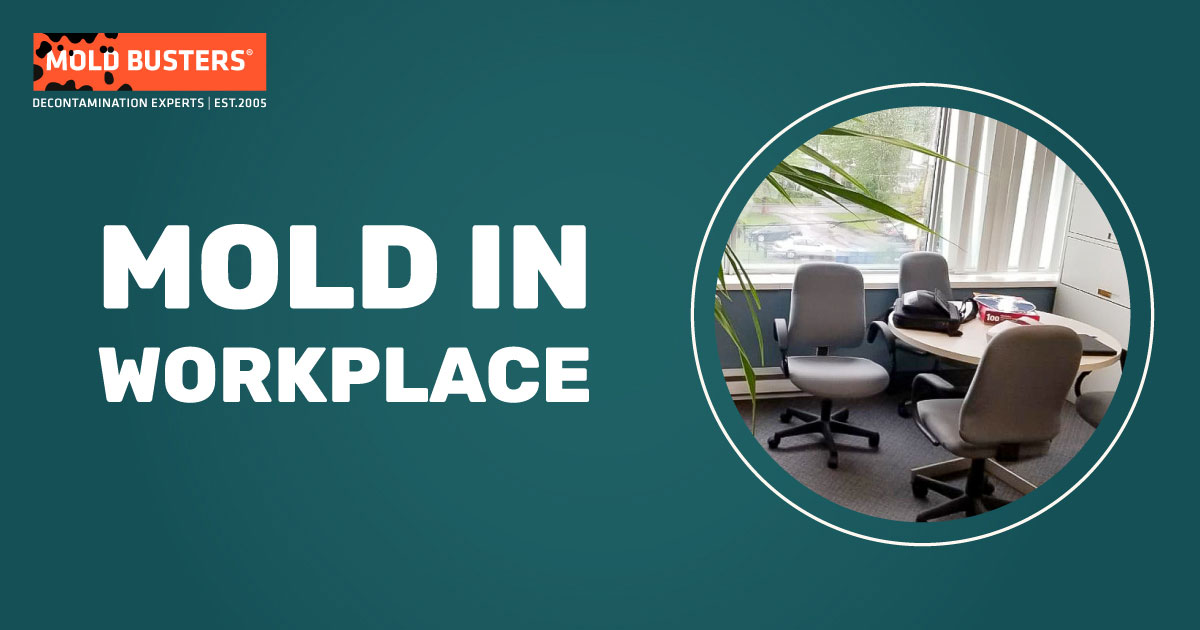Mold in Workplace
Having a safe workplace is paramount no matter what you work at or where you work. Going to your job knowing that your environment is safe from physical hazards is necessary for being productive. Also, being safe from health-related hazards is another way your workplace should be maintained.
An unhealthy workplace causes sickness, which leads to time off work and slows productivity as the employees are affected in other ways, including dizziness, fatigue, and nausea.
Mold in the workplace is a significant cause of these symptoms and, if left unremedied, could lead to serious health issues. If you are an employee and you notice mold, let your supervisor know to be remediated promptly. If you are an employer, make sure you do quick visual inspections periodically. The best thing you could do is schedule a mold information session for you and your maintenance staff by contacting Mold Busters.
Concerned About Mold in Your Workplace? Get a Free Inspection!
Mold in the workplace can cause significant health issues and reduce productivity. Don’t let it go unchecked! Contact Mold Busters for a free virtual mold inspection. Our experts are ready to provide a comprehensive assessment and a plan to address any mold problems, ensuring a safe and healthy work environment. Act now to protect your team!
Causes and signs of mold in the workplace
When determining an issue with mold in your work environment, you can inspect some common areas to see if you have a mold colony growing.
- The most common area is anywhere that could have water contamination—your roof, bathrooms, kitchen, and common areas, as well as ground-level areas. If there is any water contamination in the workplace, this could lead to a mold issue. Another place that water intrusion is common is around air conditioning units. These units remove moisture from the inside air to make it more comfortable for working, but sometimes the dehumidification units in the air handler malfunction and can cause water to leak into the dwelling or workspace. This will increase the chance of establishing a mold colony.
- Another very common way mold can start growing inside the workplace is from food waste in common areas or the kitchen. Once this food goes unnoticed by staff and cleaners, mold will grow quickly and expand to other items like the cupboards or walls surrounding the original contaminated food. Keeping all kitchen and common areas clean and free of waste food will go a long way in keeping the workplace healthy.
- A third place that could be causing mold issues is the contamination of the ventilation system. When mold and dust grow inside the ducts of a building’s ventilation system, it could cause an assortment of various health issues that could be first diagnosed to be caused by something other than mold in the air. Therefore, it is essential to have air sampling done by a Mold Busters professional to rule out mold spores in the air itself.
- There are other places where mold can grow and thrive. Being a commercial space, rodents are frequently drawn to these buildings because of the lack of nighttime activity and ease of access through doors during the daytime. Rodent droppings inside walls can cause mold to grow and not be noticed for some time. This is another hidden mold source that should be investigated.
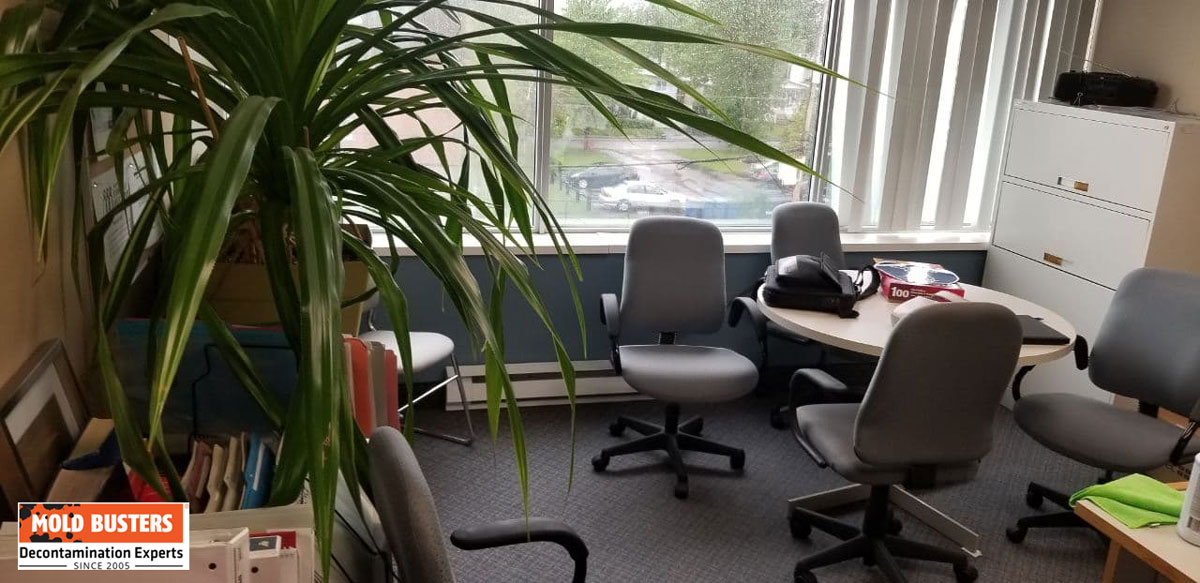
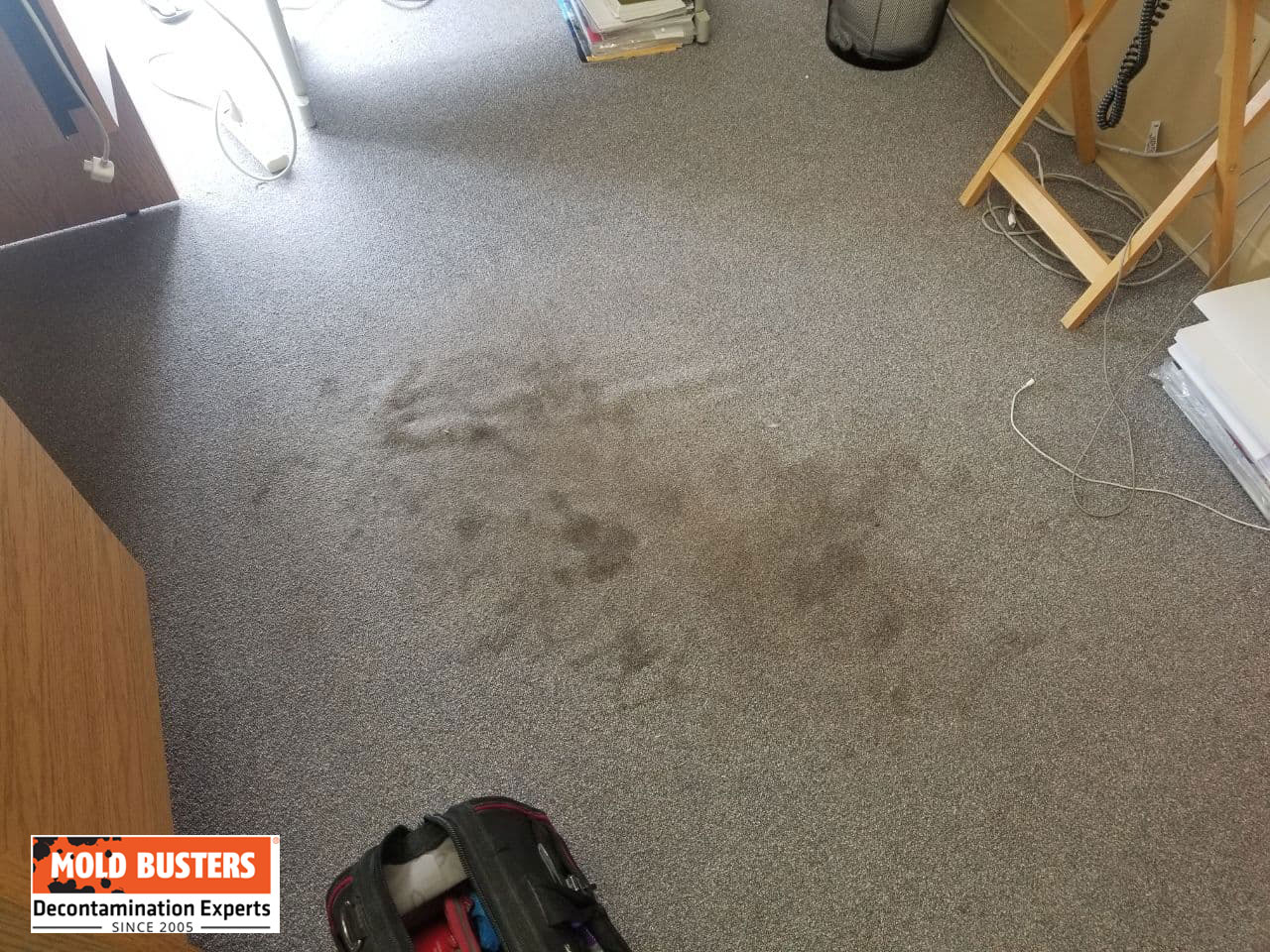
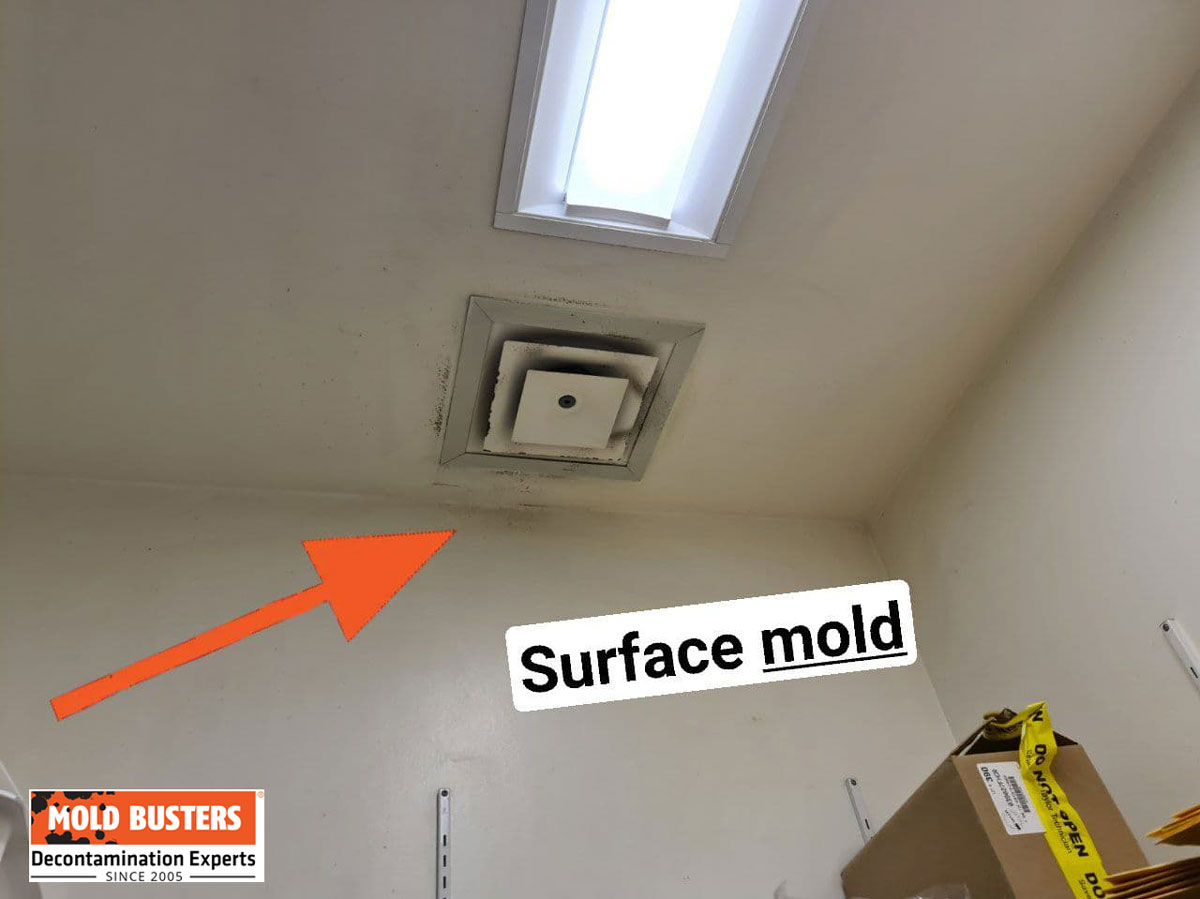
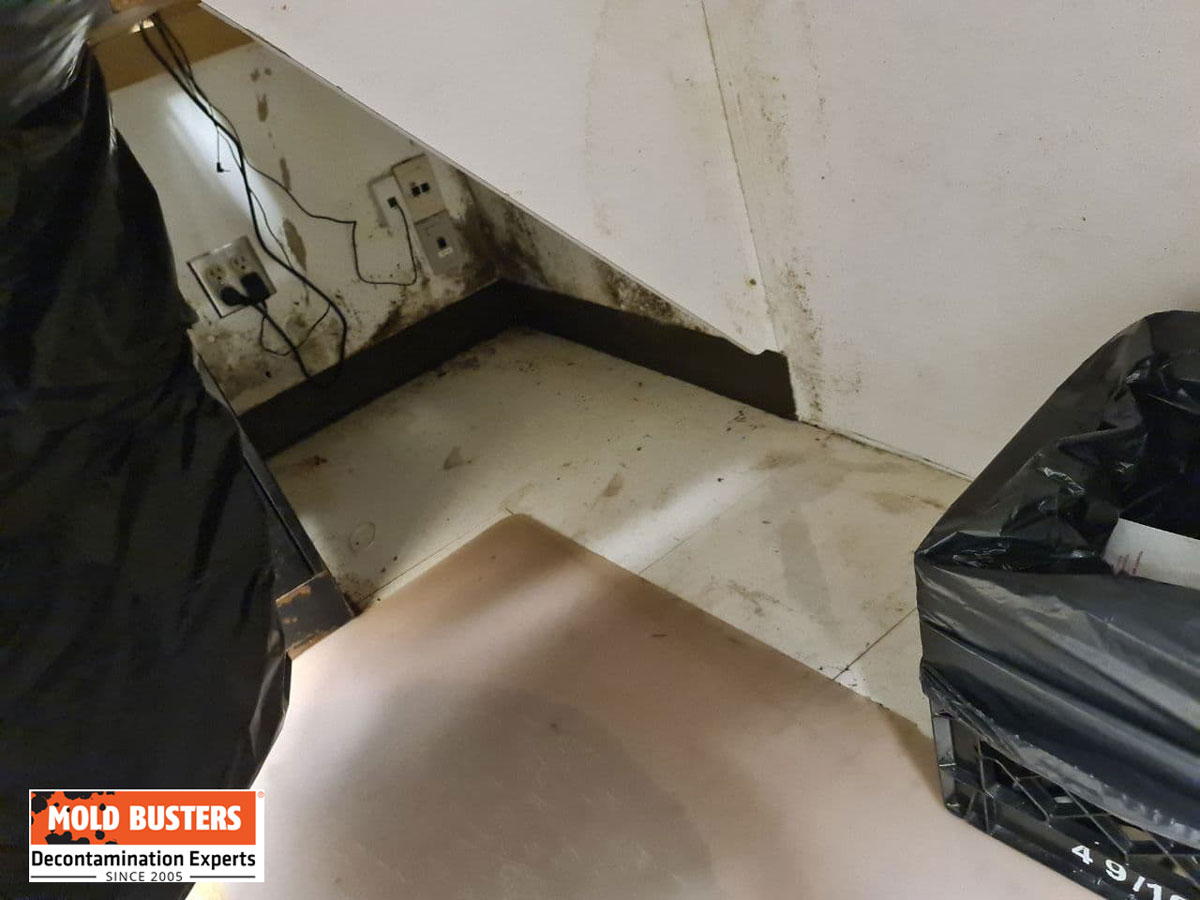
Health risks of mold contamination in the workplace
There are many health risks and symptoms associated with mold in the workplace. These can be anywhere from mild to severe and happen quickly or over time.
- Allergens from the mold can cause eye itchiness, watering, and irritation. The eyes will feel scratchy and sore. Watering of the eyes is a common symptom. This happens because your body is trying to flush the contaminants out of the eye naturally.
- Another symptom would be an “itchy” nose, throat, and ears. All three areas could become inflamed and feel itchy from the mold exposure. These could be controlled by antihistamines taken daily, but the issues would continue to evolve and worsen over time.
- Skin irritations and rashes are common reactions from mold exposure, and these could be itchy rashes or hives, or painful bumps on the skin. Either way, you need to have them looked at by a professional.
- Nausea is a common symptom of having exposure to mold in the workplace. Feeling sick after a few hours in the office regularly is a tell-tale sign of something wrong with the building.
- Dizziness and fatigue come under the same group of symptoms of mold exposure as nausea. Inhalation of the mold spores over a longer time frame will cause these symptoms. These symptoms start showing themselves after weeks or months of exposure, so they are commonly misdiagnosed by being caused by other factors.
- The most critical problem from mold comes from respiratory irritation. Not being able to breathe properly can cause health risks, and when coupled with the increased irritation, factors of the mold are double-fold. Again, this is sometimes misdiagnosed as asthma or some other condition when it’s mold exposure causing breathing issues.
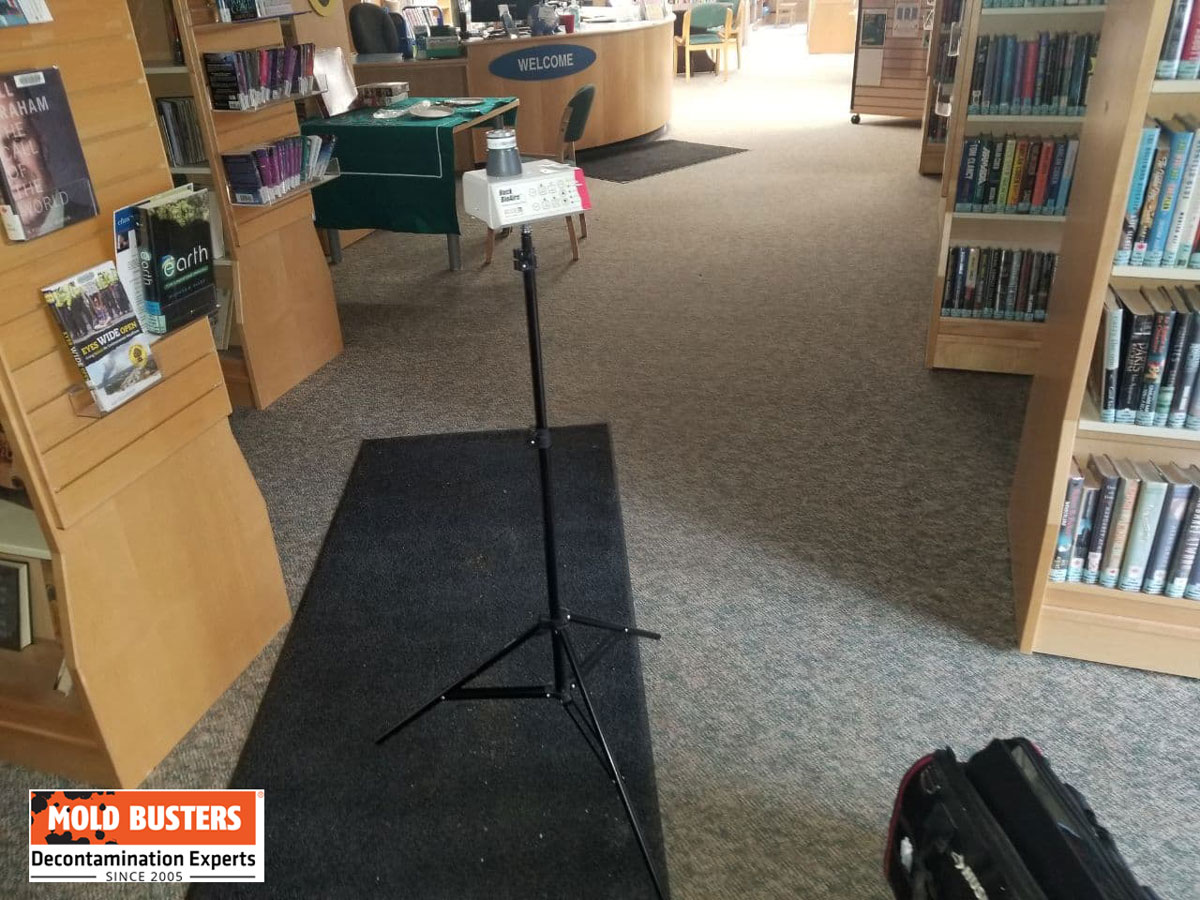
If you feel any of these conditions happening at the workplace and then tapering off when you are outside of the office, talk to your supervisor and have a Mold Busters professional inspect the workplace or provide a virtual mold inspection to rule out mold contamination as a cause of any of the symptoms being reported.
Prevention of mold in the workplace
Prevention of mold in the workplace is not singular in implementation, and it takes the efforts of everyone that works inside the space, from all coworkers and supervisors to maintenance and janitorial staff. Everyone must work together to do their part in keeping the workplace mold-free.
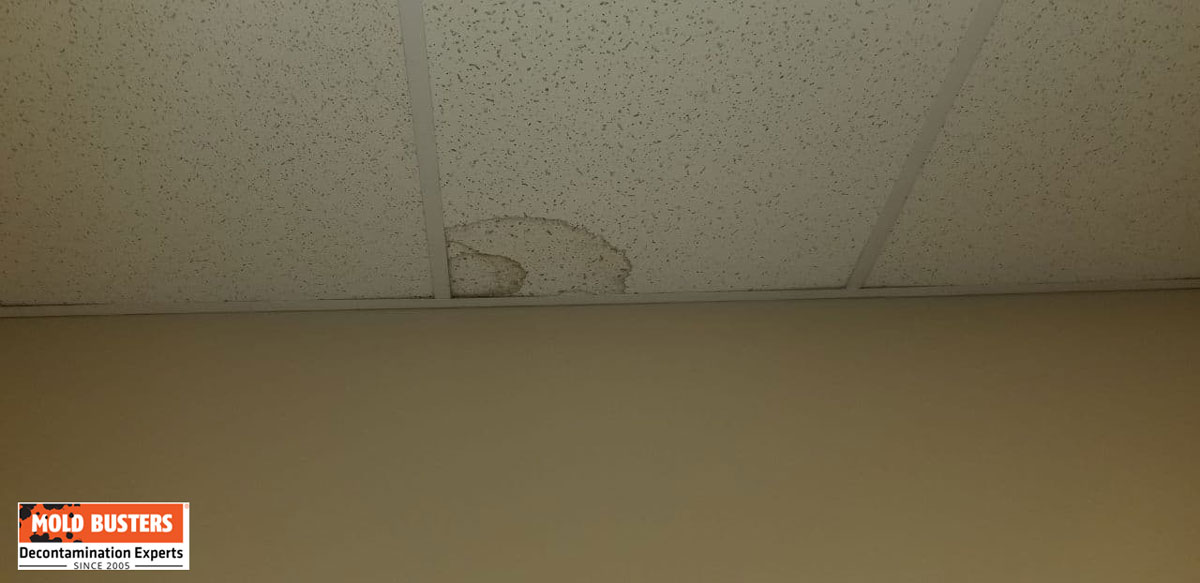
- At the basic worker/employee level, each worker should keep their workspace clean and tidy and free of food waste and water when not in use. Also, what I like to call “mold aware” is a great habit of getting into while at work and home. Do a quick walk around your workplace and see if you notice any water intrusions, food debris, heavy dirt/dust buildup, or animal waste.
- Being a supervisor brings extra responsibilities to the workplace. You need to make sure your employees are healthy and safe while at work. Being educated in environmental health will bring with it more productivity and safety for your workers. Knowing where to look for and diagnose mold contaminations will go a long way in keeping your workplace operating at 100 percent efficiency.
- The maintenance and janitorial staff have a huge role in keeping workspaces clean and tidy, and this is their main role as an employee. Keeping workspaces clean and free from things that can create mold issues is something every maintenance staff member must be doing—keeping these employees educated in what to look for and how to remove and clean up small mold contaminations is paramount to keeping the workplace moving at expected rates. They need to be aware of temperatures and humidity levels and ventilation inspections to ensure there is adequate airflow for the premises.
How to remove mold in the workplace
Removing mold in workspaces is not a simple thing to do, and you must make sure the mold is not spread to other areas of the workplace. Keeping employees from the remediation area is also very important. Small remediations can be completed by maintenance staff if they are adequately trained in doing so. This is where Mold Busters comes in. Mold Busters can provide the proper training to your staff in the techniques required to remove and dispose of the mold. They will also provide the proper instructions on the usage of personal protective equipment (PPE).
Breaking down the contaminated areas into four levels will make it simpler to diagnose and properly judge how to proceed.
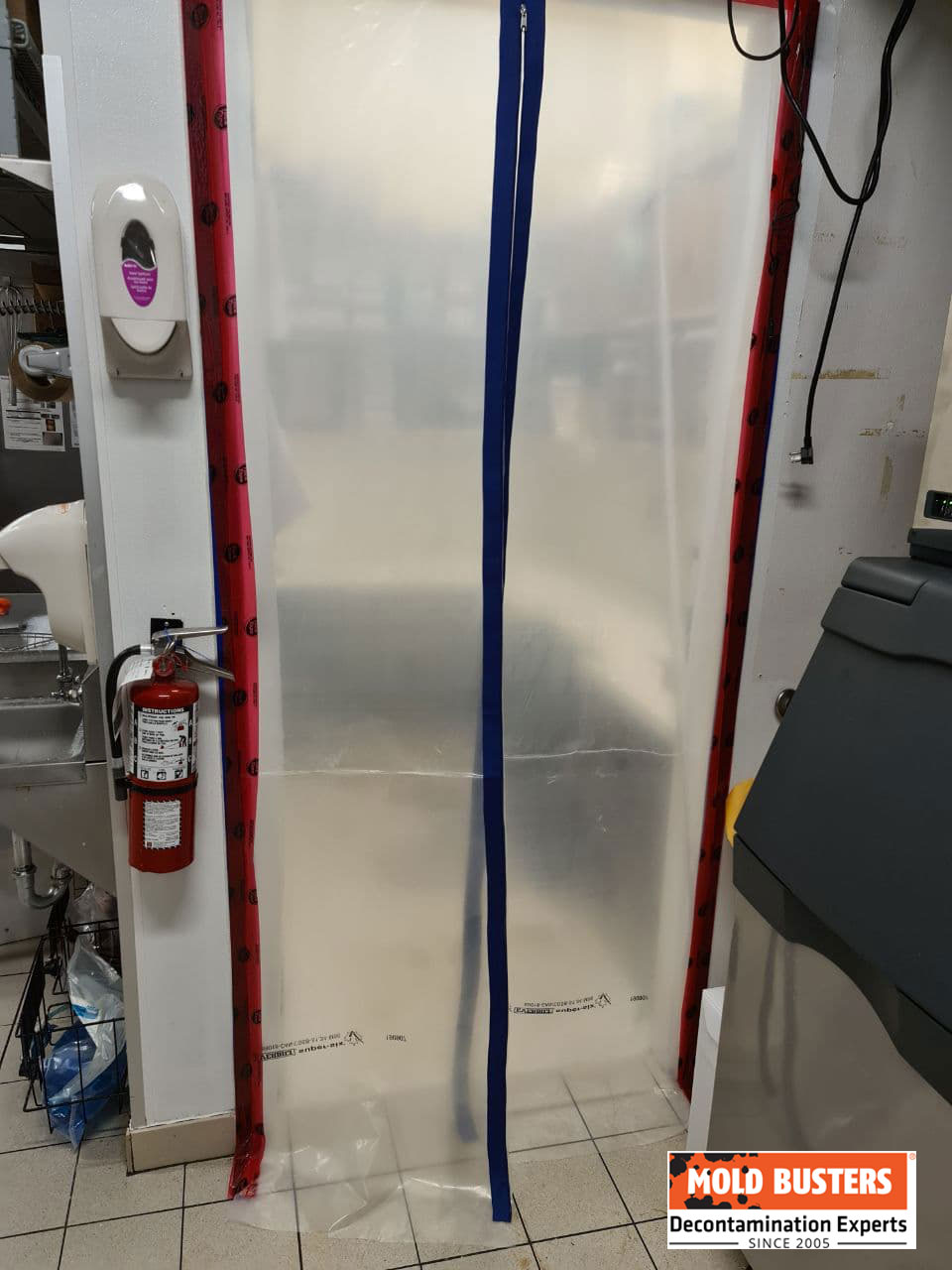
Level 1 – 0 sq ft. to 10 sq ft.
This level can be remediated by maintenance staff, provided they are fully trained in small mold remediations. This level can be taken care of with just people removed from the immediate area without containment. PPE must be worn at all times.
Level 2 – 10 sq ft. to 30 sq ft.
Level 2 contaminations can be remediated by maintenance staff, provided they are trained in level 2 contamination. This level needs the immediate area cleared of all employees, plus any adjacent areas evacuated as well—for example, the next room across and to either side of the contaminated room. PPE must always be worn.
Level 3 – 30 Sq ft to 100 sq ft.
Level 3 conditions are not to be disturbed by maintenance staff. Professional remediation personnel needs to be called in for these situations. A full containment needs to be erected to provide a safe environment to remediate the mold infestation. All employees are required to be out of the area being remediated with a Level 3 contamination. The professionals at Mold Busters in Montreal are the premier choice in these situations and will provide the proper protocol and resources to remediate mold from your workplace properly.
Level 4 – 100 sq ft. and above
A level 4 mold contamination is large multi-room contamination that requires expertise to remediate properly. A multi-room containment must be constructed, and all personnel must be fully certified to work inside the containment. No one must be in the containment and remediation sites. All workers must wear full PPE inside the containment and follow proper techniques and guidelines for remediation. Mold Busters in Ottawa are fully trained and certified in mold remediation. Contact them to have your mold removed professionally.
In Conclusion
When working in the workplace, there should be a policy in place for mold discovery. If an employee discovers mold visually, a certain set of rules should be in place to ensure the safety of the entire workforce. Also, if employees are not feeling well and it could be symptoms from mold exposure, the employer should take it onto themselves to investigate to see if there is a hidden mold source creating the illnesses. When mold is discovered, all proper procedures must be followed as listed above for correct remediation. If these guidelines are not followed, the mold could be spread easily, and more employees could become Ill. Dealing with mold should be left to the experts at Mold Busters. They are professionals.
Frequently asked questions
What do I do if I find mold in my workplace?
If you find mold in your workplace, it is best to contact your supervisor and report your findings. From there, the employer should have a mold protocol to follow for proper handling of mold.
Are there any regulations on mold in the workplace?
There are regulations in place for the safety of employees in the workplace. Section 25(2)(h) of the Occupational Health and Safety Act states that every precaution reasonable should be taken to ensure the safety of workplace employees. This includes protecting workers from mold exposure. To further this regulation, there are various publications that deal with proper guidelines for mold as well. The Canadian Construction Association has a publication called “Mold Guidelines for the Canadian Construction Industry,” and Health Canada has a publication called “fungal Contamination in Public Buildings: Health Effects and Investigation Methods“. Both will guide an employer and employees through the proper handling of Mold in the workplace.
What are employees’ rights when it comes to mold in the workplace?
The employee’s rights when it comes to mold in the workplace are part of the Occupational Health and Safety Act. Every worker has the right to a clean and safe work environment, and following the proper procedures will ensure that every employee is protected from adverse mold conditions.
Who do you call to report mold in the workplace?
The first person you would call would be your supervisor to decide what kind of mold contamination you have. If it is a Level 1, your maintenance staff can remediate the mold if they are fully trained in mold removal. If the contamination is larger, The first call should be to Mold Busters to have a professional inspector assess the contamination and determine the proper steps to remediate it.
What are the symptoms of mold in the workplace?
The symptoms can vary from person to person because of their tolerance and underlying conditions. Some will not be affected at all, while others will find they have itchy skin and eyes. Some will find breathing to be more difficult with sneezing and coughing. Nausea, fatigue, and dizziness are all symptoms that could result from coming in contact with mold.

Get Special Gift: Industry-Standard Mold Removal Guidelines
Download the industry-standard guidelines that Mold Busters use in their own mold removal services, including news, tips and special offers:
Published: November 5, 2021 Updated: June 12, 2024

Written by:
Steven Adams
AMRT, WRT, ASD
Mold Busters
Fact checked by:
Michael Golubev
CEO
Mold Busters

